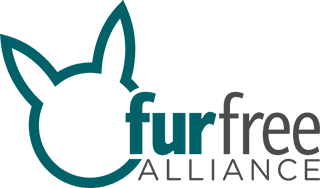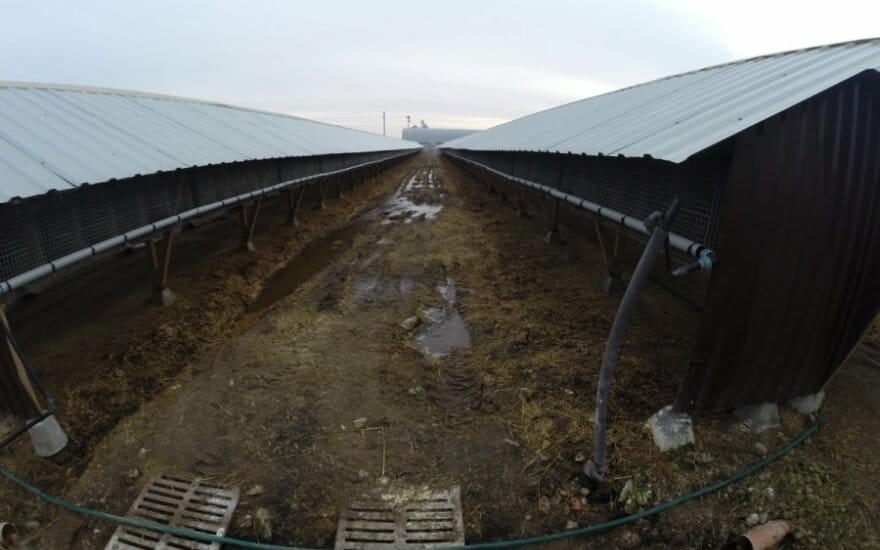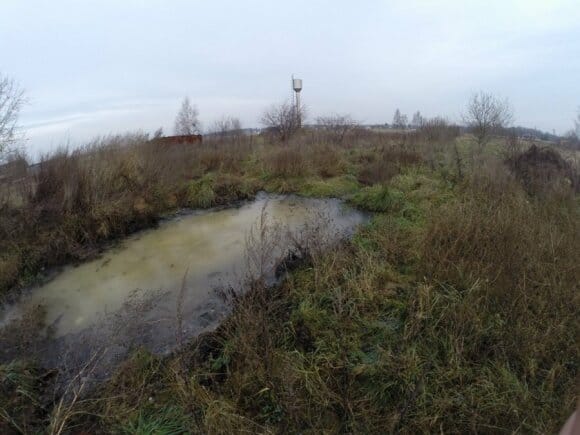Intensive fur farms produce tons of manure, producing greenhouse emissions, nutrients flows, loss of biodiverstiy and attracting armies of flies. Waste runoff from intensive fur factory farms is a major pollution problem, contaminating soil and waterways.

Local pollution

Waste runoff
Fur farms worldwide are consistently reported to violate environmental regulations. Manure, extra feed and carcasses get thrown into wetlands while run-off from fur farms seeps into watersheds.
In 2015, following complaints from Lithuanian residents of the intensively fur farmed district Siauliai, 31 local fur production facilities were inspected. Alarmingly, each of the 31 fur farms were found in breach of waste disposal regulations and causing severe ecological damage. A follow-up investigation in the same region in 2016, reported 12 out of 19 fur factory farms in violation of environmental regulations.
In Poland, audits conducted in 2011 and 2014, by the Polish governmental Supreme Audit Office (NIK), reported 15 out of 20 farms in breach of environmental requirements, such as provisions of the Water Resources Act, causing a direct risk of groundwater contamination.
Water pollution
Nutrients in manure runoff from fur factory farms leads to growth of toxic algea in waterways, causing loss of biodiversity and rendering lakes unswimmable. When algae blooms occur, it limits the amount of oxygen for other aquatic species and causes dead zones.
Mink farms are the most likely source of water quality problems in nine Canadian lakes in western Nova Scotia, according to an Acadia University report released by the province’s Environment Department in 2012. According to the report by Mike Brylinsky of the Acadia Centre for Estuarine Research, water quality surveys carried out between 2008 and 2012 showed lakes within the watersheds to be seriously degraded:
“primarily with respect to high nutrient over-enrichment resulting in the development of high algal concentrations.”
Rural impact

Protests of rural communities against the negative impact of fur factory farms on their regions are common around the globe. Complaints by local residents centre on issues as smell, flies, noise and water pollution, disrupting rural life and lowering property values and tourism revenues.
Since the emergence of intensive fur factory farms in the Polish rural district of Gmina Zorowina, local residents are publicly speaking out against the negative impact of the farms on local communities.
Between 2012 and 2017, 141 protests of local residents against fur farms were reported in Poland, world’s third largest producer of fur pelts.
Citizen's protests
Photos
More facts
The attitudes of local residents towards fur farms in Poland (2018)
Independant study by ZOBSiE, Polish center for Social and Economic research. Commisioned by Open Cages, Fur Free Alliance and the ALbert Schweitzer Foundation
Fur farms in Blekinge – Polluted areas (Sweden, 2013)
Study commisioned by the Swedish competent authority of Blekinge Municipality (Original title: Pälsdjursfarmer i Blekinge – Förorenade områden)
The impacts of the mink industry on freshwater lakes in Nova Scotia (2011)
A study by the David Suzuki Foundation.




